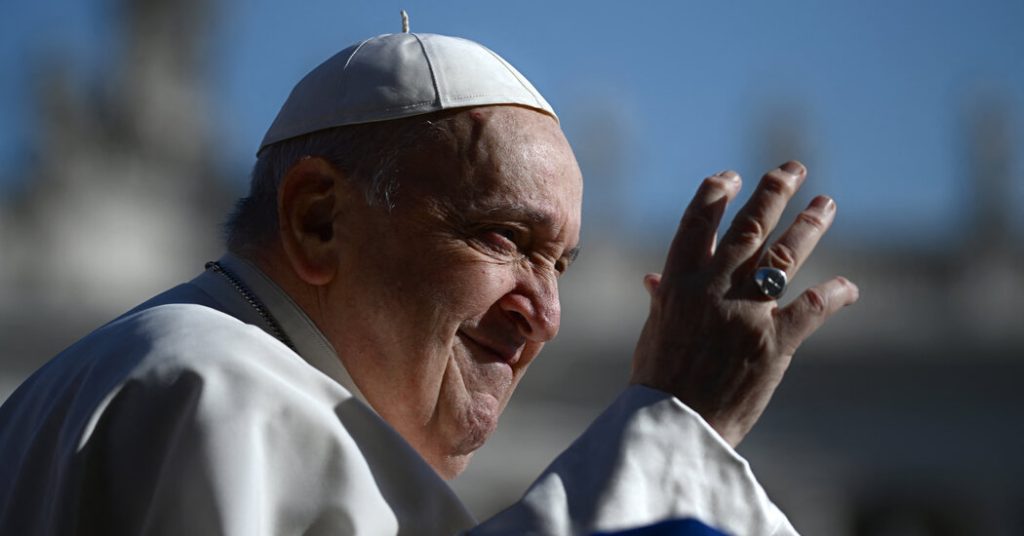Pope Francis’ health has improved sufficiently for him to be released from a Rome hospital on Sunday, allowing him to recover in the Vatican for a minimum of two months, according to his doctors on Saturday evening.
On Sunday, the Pope is scheduled to make his first public appearance since his hospitalization on February 14. He plans to appear at noon on the 10th-floor balcony of Gemelli Hospital to greet supporters and deliver a traditional Sunday blessing, as confirmed by Matteo Bruni, the Vatican spokesman, during a press conference on Saturday.
The announcement of the Pope’s impending release marks a significant turnaround for the leader of nearly 1.4 billion Roman Catholics worldwide, who had been in critical condition for weeks, raising the possibility of a conclave to select his successor. Francis’ gradual recovery signals a new chapter for both him and the church.
“It’s a sigh of relief,” said Father Antonio Spadaro, a close associate of the Pope, on Saturday evening. He noted that both the church and a changing world have long awaited and needed his presence.
Although Francis managed to govern the church from his hospital bed, he will return home after delivering his blessing on Sunday, according to Mr. Bruni.
Only weeks ago, there was significant concern that he might not recover. The medical team at Gemelli Hospital revealed on Saturday that Francis’ pneumonia had been severe enough to put his life in peril on two occasions.
While the Pope has overcome the critical infections he faced, doctors have stated that he is not fully healed and will need a period of rest lasting at least two months.
At 88 years old, Francis will still require medication and supplemental oxygen as part of his recovery process from pneumonia. The medical team expressed hopes that he would soon no longer need oxygen but advised him to avoid large gatherings and young children to minimize the risk of infection.
The doctors noted that Francis is experiencing difficulty speaking, a common issue after severe damage to the lungs and respiratory muscles. “One of the first effects is a loss of voice,” explained Dr. Luigi Carbone, the Pope’s physician. “It will take time for his voice to return to normal.”
For weeks, Catholics worldwide have been praying for the Pope’s recovery and since February 25, cardinals and bishops have led a nightly rosary in St. Peter’s Square, attracting hundreds of believers each evening.
Francis remained in critical condition for several weeks, dealing with an asthmatic crisis, initial mild kidney failure, and a bronchial spasm that caused him to inhale vomit during a coughing fit. He received noninvasive ventilation at night and high-flow oxygen during the day.
Once he overcame the most severe stages of his illness, the doctors asked the Pope how he was feeling.
“‘I’m still alive,’” was the Pope’s response, stated Dr. Alfieri, which indicated to them that his spirits had lifted.
The medical team confirmed that the facilities at the Pope’s Vatican residence are adequately equipped to support his medical needs, with emergency services available 24/7.
Despite his ongoing struggle with bronchitis during winter, Pope Francis maintained a demanding schedule before his hospitalization, particularly with the opening of the Jubilee year, which occurs only once every 25 years.



